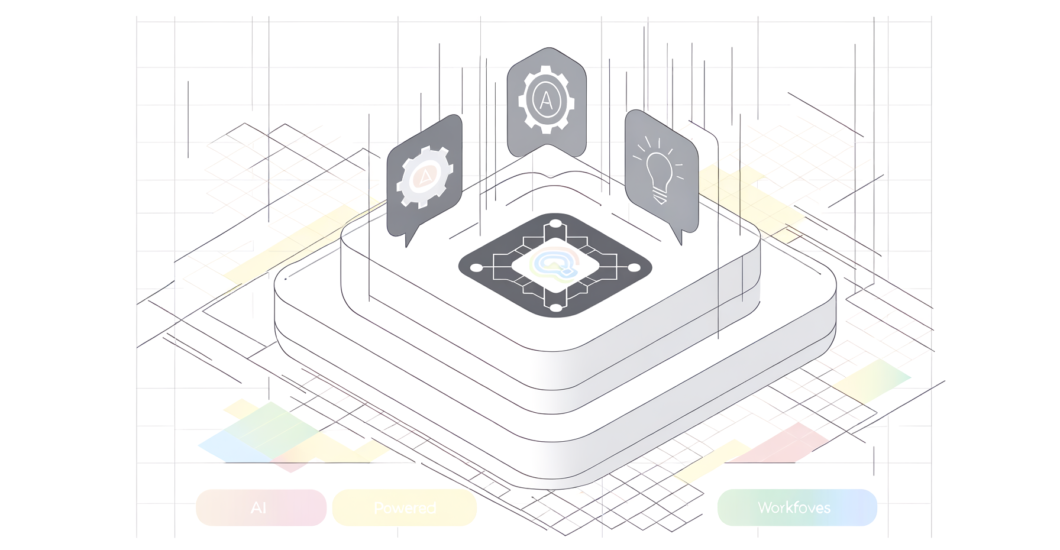Work Smarter, Not Harder: AI-Powered Workflows for Maximum Efficiency
In today’s fast-paced digital landscape, where productivity often takes precedence over everything else, the mantra “work smarter, not harder” resonates more than ever. With artificial intelligence (AI) revolutionizing how we approach our daily tasks, we stand on the brink of an efficiency revolution. Gone are the days of spreadsheets filled with cumbersome data; instead, AI is stepping in to enhance workflows, automate repetitive tasks, and improve decision-making. In this guide, we’ll explore how AI-powered tools can transform your work processes, streamline communication, and ultimately free up valuable time for creativity and innovation. Get ready to dive into a world where efficiency is not just a goal, but a continuous journey.
Understanding AI and Its Role in Modern Workflows
To fully appreciate the nuances of AI-powered workflows, we need to first understand what AI really entails. At its core, artificial intelligence refers to machines or systems that can mimic human intelligence to perform tasks, analyze data, and provide insights in ways that we humans simply cannot manage alone. The implementation of AI in the workplace isn’t just a futuristic concept; it’s here, revolutionizing industries from marketing to customer service.
Utilizing AI can lead to streamlined processes through data analysis and predictive analytics. For instance, consider how chatbots handle customer inquiries, providing instant responses and freeing human agents to tackle more complex issues. As such, integrating AI solutions becomes essential for companies looking to stay relevant and competitive in a landscape driven by technology.
Automating Repetitive Tasks: The Power of AI Tools
One of the most straightforward advantages of AI in the workspace is automation. Automation isn’t merely about removing human labor; it’s about enhancing capabilities and allowing people to focus on more creative tasks. For instance, applications like Zapier or Microsoft Power Automate enable users to automate workflows across various platforms, connecting apps and services to trigger actions based on specific conditions.
Additionally, tools like AI-driven email assistants, such as x.ai, can schedule meetings automatically, parsing email threads and finding appropriate times for all attendees without the back-and-forth ping-pong of messages. This form of automation results in huge time savings and drastically enhances productivity, showcasing how automation can truly transform mundane, repetitive tasks into seamless workflows.
Enhancing Decision-Making with Predictive Analytics
As we move forward, we can’t overlook the impact of AI on decision-making processes. Predictive analytics leverages machine learning algorithms to analyze historical data and predict future outcomes. This capability empowers businesses to make well-informed choices based on data, rather than relying on gut feelings or incomplete datasets.
For example, platforms like Salesforce Einstein leverage customer data to provide actionable insights—suggesting next steps in sales pipelines or identifying potential churn risks among clients. Such tools not only improve the precision of business strategies but also enable teams to allocate resources more effectively, focusing on high-impact areas that need immediate attention.
Streamlining Communication and Collaboration
Effective communication is crucial for any organization, and AI tools can significantly enhance collaboration among team members. Natural Language Processing (NLP) technologies, for example, can help summarize lengthy discussions and provide highlights that keep everyone on the same page. Platforms such as Slack or Microsoft Teams equipped with AI functionalities allow users to search previous conversations quickly or summarize key points, ensuring that critical information doesn’t get lost amidst the chatter.
Moreover, virtual meeting platforms like Zoom increasingly use AI to improve audio and video quality, filter out noise, and provide real-time transcription services. Such features not only enhance the meeting experience but also allow for greater accessibility—empowering teams to communicate effectively, irrespective of geographical barriers.
Conclusion: Embrace AI for a Future of Efficiency
As we delve deeper into the AI-powered future of work, it’s clear that the potential for enhanced efficiency is incredible. By automating repetitive tasks, enriching decision-making processes with predictive analytics, and improving communication, AI tools are setting new standards for what productivity looks like. To truly embrace the benefits of AI, organizations must be willing to adapt, experiment, and implement these transformative tools into their workflows. In doing so, we create an environment where innovation flourishes, and the ethos of working smarter becomes the new norm—allowing us all to transform how we approach our work for the better.


